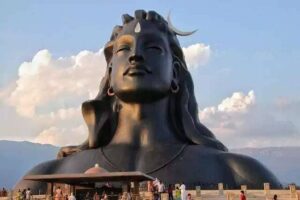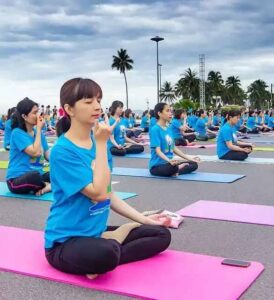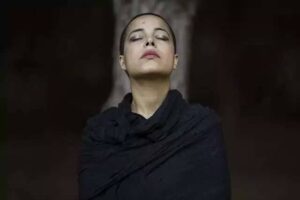Types of Pranayama and benefits: All you need to know about Pranayama yoga
What is Pranayama?
Types of Pranayama and benefits offer a good practice of balancing our body, mind, and soul. Moreover, it is the study of the mind.
Pranayama is a Sanskrit word for control of this life force. Prana implies life force, and Ayama, to extend. All day, we perform several tasks, and for every action, we spend prana – the vital energy.
Moreover, you might have heard from someone that we live a life by a fixed number of breaths. In other words, we live the destined breaths accomplished by our karma.
Yoga teaches the same result as the deep and steadier the breaths, the longer the life. And a shorter life span is characterized by shallow breaths.
That’s why, for better health, we should have a deep breath. Mostly, our lung capacity remains unused. Since we use only a small scale of lung volume in breathing, their potential deteriorates day by day.
Prana is said to be responsible for the trail of energy in the body. There are some terms you must know to understand the work of pranayama yoga.

1. Prana
We breathe air as a source of energy and power to our whole mechanical system, called prana. However, we also get it through food, deep breathing, water. Besides, they are a source of energy for our body.
2. Apana
It signifies whatever we remove from our body in the form of air, water, etc. includes in Apana. Apana is the outward flow of energy. This term governs everything that leaves the body, irrespective of form.
3. Vyana
The circulation of blood and Prana, throughout the body, is known as Vyana. It implies the circulation in our body, whether it is of oxygen, blood, or energy.
4. Udana
Some functions indicate how our body reacts to a particular smell, food, or environment. These can be hiccups, vomiting, sweating, etc. Further, it is known as the reserve process. This phenomenon is responsible for the creativity of a person.
5. Samana
It is another term in Sanskrit for digestion. The assimilation of food and liquid that we take in is called Samana.
Pranayama meaning
Pranayama is the fourth element of yoga. This Sanskrit word implies breathing air to provide the power of life. Therefore, it is a practice of systemic breathing that influences our mental and physical health.
It mainly works on three breathing techniques includes inhale, exhale, and holding breath. Several types of pranayama and benefits require controlled breathing based on these three activities.
Some of them include Anulom-Vilom, Kapalbhati, Surya Bhedan, Ujjayi, Bhramari, Sheetali, Sitkari, etc.
Moreover, meditation quiets the mind. And, pranayama studies the mind. It raises the Kundalini and makes us healthy, and light removes all laziness and Rajas. Pranayama yoga prevents diseases and invigorates nerves.
However, one should practice pranayama with an empty stomach to achieve the best of it. Regular practice of different types of pranayama benefits your nervous system.
Also, learn not to have a bath just after performing pranayama, exactly like we should not bath immediately after a workout session. Let your body relax after practice.
Pranayama is all about holding breathe, but do not exert yourself too much for this. Moreover, do not practice anything which is beyond your capacity.
Alternatively, you can practice the ratio of 1:4:2 for Purak (inhalation), Kumbhak (holding of breath), and Rechak (exhalation), instead of jumping on higher and intensive breathing practices.
Although one should sit on Padmasana, Sidhasana, or Sukhasana while performing pranayam, you can also choose any comfortable position.
Just make sure that you are going to have a relaxing breathing exercise. Also, the postures might change with the types of pranayama and benefits.
However, we can control prana in the body through meditation. Moreover, its reverse is also true.
That means you can influence your mind (thoughts) by ensuring a better flow of prana in the body.
Pranayama: The ancient breathing technique
Pranayama is a breathing technique from the ancient science of yoga. However, types of pranayam benefit the internal energy within us.
And it provides a healthy, balanced, and active life. One can efficiently perform some pranayama sequences to lead a healthy and stress-free life.
Because morning time is considered the most healthy, peaceful, and full of positive vibes, we should practice yoga, pranayama, and asanas early in the morning.
To practice types of pranayama and benefit, one should sit straight with their body and neck aligned. The spine should be straight.
Because in this situation, we can ensure the proper flow of blood and energy through the body.
Practicing pranayama helps us build control over our physiological self through controlled breath and self-control.

Through pranayama, we focus the motion of our lungs and other respiratory organs, which in reflex leads to the flow of prana in our body.
And through prana mind can be guided as it is much attached to prana. It can always amuse you by its astonishing results.
Some yogis, who practice pranayama daily and have gained control over prana, can live without food for long. They are supposed to obtain energy from air, sunlight, and water.
Types of Pranayama sequence for daily practice
The types of pranayama and benefits are an extract of science about long life and leading it healthily. The fourth limb or anga of yoga, pranayama, focuses on the controlled regulation of prana.
1. Bhastrika Pranayama
Sit comfortably on asana either in padmasana or in any other asana you are comfortable doing. Take a long deep breath and fill up your lungs.
Also, let your diaphragm stretch. Breathe out gently, relaxing your diaphragm and spine. Repeat the process for 5 min.
This pranayama benefits our heart, lungs, and brain. It can also cure headaches, migraines, depression, paralysis, obesity, etc.
It develops and maintains the neural system and helps concentration. Moreover, we can heal some allergic and stomach problems like acidity, gastric, constipation.
2. Kapalbhati Pranayama
Kapalbhati Pranayama involves short and powerful exhales. Push air forcefully out, and as a reflexive action, your stomach goes inwards. You should practice this pranayama for 5 minutes to ensure its favorable effects.
It increases the glow and glory on your face, also called Abha and Tej. Similarly, it cures asthma, snoring, diabetes, etc. It considerably impacts allergic problems and also resolves stomach issues.
Moreover, it reduces bad cholesterol and prevents several diseases like cancer and AIDS.
However, heart and high blood pressure patients should do it slowly, at any pace, you like and must have some advice from your health adviser or fitness trainer.
It cures digestive problems, cold, cough, asthma, obesity, etc. Regular practice of this pranayama ensures proper body functions as it regulates glandular functioning.
3. Anulom Vilom Pranayama
Anulom Vilom Pranayama, called alternate nostril breathing or Nadi Shodhan Pranayama, involves control over subtle prana that flows through specific channels in our body.
There are Channels named ‘Ida’ and ‘Pingla’ that remained unidentified anatomically.
Practice this pranayama control the prana flow balancing the energies through the Ida and Pingla Nadi.
There is one more Nadi that controls the channel to regulate prana called Sushumna Nadi.
This Nadi responsibly balances Ida and Pingla, which are similar to the two hemispheres of the brain.

This pranayama purifies the nervous system and improves mental calm, peace, and tranquility. However, cardiac or blood pressure patients should not hold breaths. Instead, continuously inhale and exhale during the practice.
Sit straight so that your back is aligned. Practice any meditative posture like Sukhasana, Padmasana, Siddhasana. You can sit on a chair, bench as you feel comfortable.
Use your thumb to close the right nostril. Breathe in through the left nostril.
Now, hold your breath for 4 sec. Put your index finger on the left nostril and exhale through the right.
Again inhale from the right nostril and holding the breaths. Move your thumb to the right nostril and release your breath from the left nostril.
Practice the cycle for a few minutes. It regulates temperature, helps meditation, reduces stress, cough, cold, asthma, headache, and improves respiration.
4. Sitkari Pranayama
Sitkari, the hissing pranayama, has a cooling effect on our body and mind. In summer, we should practice some yoga exercises to cool down the mind and body favorably.
Its meaning in Sanskrit is hissing, which demonstrates the name.
As we clench our front teeth and breathe in through the space available between them, it produces a hissing sound. It resembles snakes hissing when they release their anxiety, frustration, stress.
Likewise, this breathing practice relaxes our anger and cools down the life force, termed as Prana.
Here, you have to sit comfortably on your mat in any meditative pose you want to sit. Remember to sit straight. Now press your front teeth together and take a deep breath.
It heals dry cough, regulates the body temperature, and also cures asthma.
5. Sheetali pranayama
Sheetali is the Sanskrit word Sheet, which implies cold and frigid. As its name, this pranayama has a chilling, cooling, relaxing effect on our body.
This breathing exercise does have an influencing impact on our metabolism that increases hunger and consequently improves our appetite. It serves as a balancing practice for pitta in our body and neutral for Vata and Kapha.
You can avoid this pranayama when the climate is pretty cold. Additionally, it might counterbalance by some heating energy like Bhastrika, Ujjayi.
Make your tongue a little out from the mouth. Curl it like a small o touching the inside boundary of the lips. And, breath in from your mouth.
It creates a soothing and cooling effect in the mouth and relaxes our body and mind.
Moreover, this pranayama cures dry cough, asthma and helps to regulate the body’s temperature.
6. Ujjayi Pranayama
Ujjayi is a Sanskrit word for ‘to conquer’ or ‘to be victorious. This mind relaxing pranayama warms up your body.
It is pranayama for anxiety, stress, insomnia, and mental tension.
Performing the pranayama sits straight and relaxed. Here, get a deep breath through your mouth and fill your lungs to their capacity.
Now, exhale, making a whisper sound from deep down your throat such as hmm.
It warms up your body and makes you feel relaxed at the same time.
Ujjayi pranayama cures your throat and cough. Moreover, it helps you in meditation, reduces stress, and provides a soothing effect on the mind.

Yoga believes in not a single perfect way to breathe. However, there might be numerous ways of breathing.
We can solely focus on normal breathing as it may become quite healing when involved with concentration.
Remember not to force your throat too much for the sound and vibrations.
Instead, you must have a guide by your side when you perform any pranayama since this activity requires preciseness.
7. Surya Bhedan
Surya Bhedan, also known as Chandra Bhedan pranayama, are two versions of single nostril pranayama.
Our right nostril is supposed to be associated with heating energy indicating the sun. However, our left nostril is associated with the cooling effects, symbolizing the moon.
There must be a balance between the two to get our bodies healthy and working.
Despite the conflicting forces, they remain integrated and tune to create a balance by the ‘warm’ and ‘cool’ body plus mind.
Sit straight, your back and neck aligned. Although it is preferred to perform in Mirgi Mudra, you may choose any position you like to have.
For Surya Bhedan, close your left nostril and breathe in through your right nostril.
And exhale through the left nostril. And repeat the cycle of inhaling from the right and exhale through the left.
Similarly, for Chandra Bhedan, use your left nostril to inhale and right to exhale and repeat the cycle for a few minutes. It helps us receiving balanced energy of the body’s warming energy and the body’s cooling energy.
8. Bhramari Pranayama
Bhramari is a black Indian bee from which this technique has derived its name. It calms down the mind.
One can free mind agitation, frustration, or anxiety and get rid of anger through its regular practice.
The technique resembles the humming sound of a bee that explains its name. It always manages to calm the nerves and soothe us. The vibration produced by the humming sound relaxes the mind and eases stress.
Sit straight in a quiet and well-ventilated place and close your eyes. Close your eyes to relax and feel the quietness and peacefulness.
Now, put your index finger on the cartilage and push them as in to close your ears.
With a deep breath, fill your lungs sufficiently. And breathe out with a humming sound like a bee. Repeat the process 3-4 times.
Pranayama Benefits
- Pranayama controls the aging process.
- Deep breathes, regulates oxygen that helps to melt and remove fats. Consequently, it leads to weight loss.
- It serves good health and fights back the diseases. Moreover, it increases mental abilities, often related to intelligence.
- Pranayama also increases breathing volume and enhances lung capacity.
- Furthermore, pranayama resolves the problems of high blood pressure, cardiac diseases and helps digestion.
- Pranayama serves benefits over mental and emotional attitudes. It helps the stillness of the mind.
- It regulates body functions and provides them a healing sensation, which helps them cure and is more productive.
- This yoga activity boosts your mental abilities like intelligence, memory power, etc.

Precautions to pranayama
- If you are suffering from any chronic health problem, you must consult a doctor before practicing pranayama.
- Pranayama is the next step after asana. Thus, one should first achieve control over the body to practice pranayama. Pranayama is a practice to regulate the flow of prana, the energy. Whereas asanas are the yoga poses that help clear up the path for the proper regulation of prana.
- While practicing pranayama, you need to breathe through the nose until told to from the mouth.
- Pranayama practice removes stress. Thus, there must be relaxation, and you should prevent every strain during pranayama practice.
- Do not practice pranayama immediately after meals. You should wait for 3-4 hours after your meal digests.
- As a beginner, you should not hold your breath. You can start to hold your breath when you become used to it. Firstly, learn basics then, switch to holding breaths. And, it must be under the guidance of a trained pranayama teacher.
- If you feel discomfort performing any yoga activity, stop performing the pranayama immediately. You may consult a doctor or yoga teacher before resuming pranayama.
- In case you practice asana and pranayama, you must perform asanas before pranayama. Do not perform any vigorous exercise just after pranayama.
- Practice pranayama with relaxation in a well-ventilated room.

Hello! It's good to read about such a cultural practice. I always look forward to such posts.
Really appreciate your work and efforts.
Keep posting such informational posts.